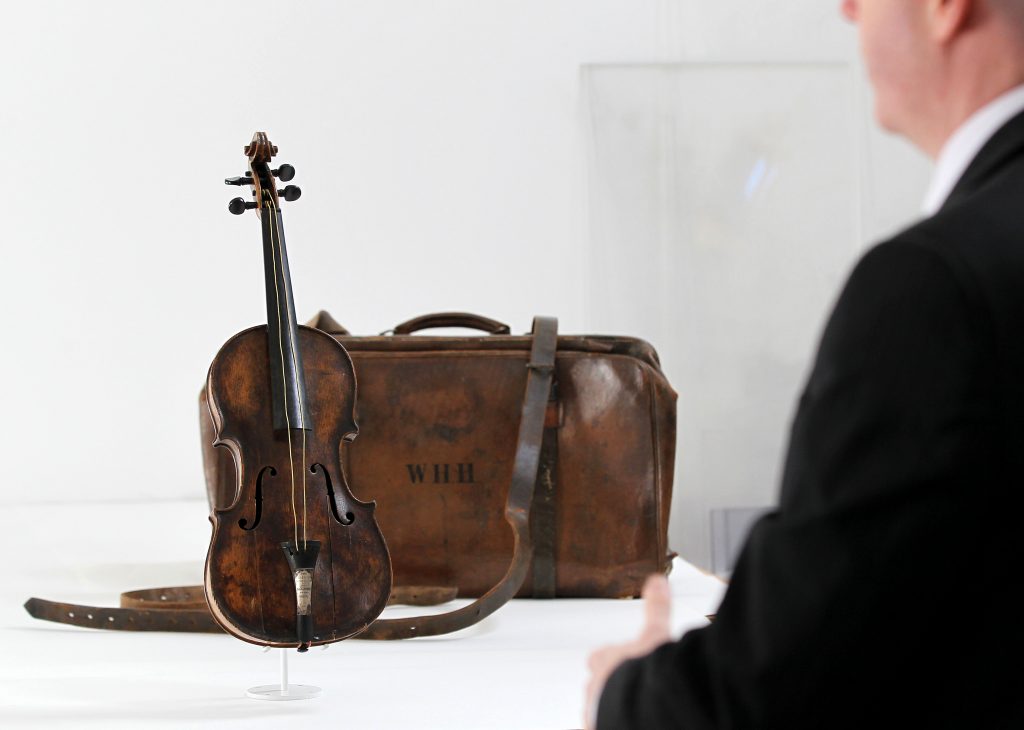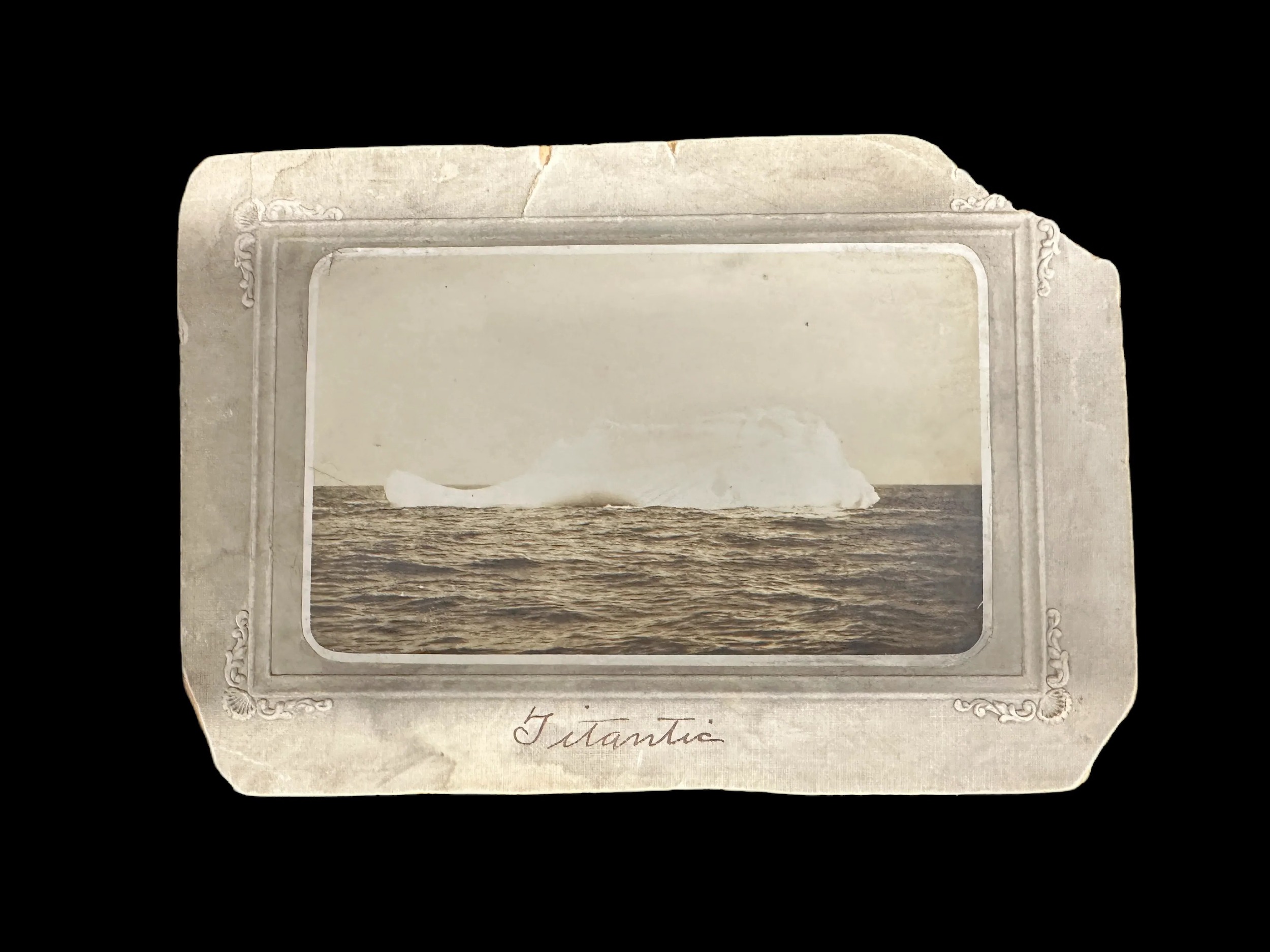On the night of April 14, 1912, RMS Titanic collided with an iceberg in the North Atlantic ocean between around 1,300 miles from its final destination of New York. Of the 2,240 passengers aboard the luxury liner, 1,522 were killed in the maritime incident. On April 17, the recovery ship C.S MacKay-Bennett set sail to recover bodies from the North Atlantic. The ship was previously used as a transatlantic cable-laying ship, but was commissioned to act as a recovery ship by the White Star Line after the disaster.
Now, a photograph taken onboard the C.S MacKay-Bennett is going up for auction on April 27 at Henry Aldridge auction house in Devizes, Wiltshire, and some believe it captures the very iceberg that sealed the fate of the Titanic. The photograph was taken two days after Titanic collided with an iceberg.
The photograph is being called “extremely rare” by the auction house, and is expected to sell for between $5,000 and $8,500. “Titanitic” (sic) is written across the cardboard period mount of the photograph. It came to a vendor of Henry Aldridge’s in the 1990s directly from the family of the funeral director John R. Snow Jr., whose father’s business John R. Snow and Company was one of Nova Scotia’s largest undertaking firms.
Snow was aboard the C. S MacKay-Bennett as part of the recovery mission, along with a team of embalmers. The ship carried with it 100 coffins and 100 tonnes of ice prepared to preserve the recovered bodies. It recovered 306 bodies, the most of any recovery ship. A hundred first-class passengers were embalmed and placed in coffins, while second-class passengers were wrapped in canvas and brought back to land, and 116 third-class passengers and crew members were given sea burials. Snow Jr. is believed to have taken the photograph himself.
RMS Titanic departing Southampton on April 10, 1912. Photo: Pictures from History/Universal Images Group via Getty Images.
The five-by-three inch photograph is one of 286 lots in Henry Aldridge’s Auction of Titanic, White Star and Transport Memorabilia sale taking place on April 27. Other ephemera and artifacts relating to the Titanic which are part of the auction include: the leather case used to store band leader Wallace Hartley’s violin—the violin itself, which was played as the ship sank, sold for £900,000 ($1.1 million) in 2013, becoming the most expensive item of Titanic memorabilia ever; the gold watch belonging to the Titanic’s richest passenger, the business magnate and owner of Macy’s department store, John Jacob Astor IV, whose body was recovered by the C.S MacKay-Bennett; and a selection of props from James Cameron’s 1997 film Titanic.

The violin played by bandmaster Wallace Hartley during the final moments before the sinking of the Titanic displayed with a leather carrying case initialed W H H in Lurgan, Northern Ireland, 2013. Photo: Peter Muhly / AFP via Getty Images.
It has never been confirmed exactly which iceberg sunk the Titanic, but some believe that this photograph may be the best bet, as the MacKay-Bennet was the second rescue ship to arrive at the scene. Auctioneer Andrew Aldridge said: “Nobody can say for sure that this was the iceberg that sank the Titanic. But what we can say is that after the rescue ship Carpathia, the Mackay-Bennett was one of the first ships to reach the wreck site and that the undertaker on board decided to take a photo of this iceberg.”
Follow Artnet News on Facebook:
Want to stay ahead of the art world? Subscribe to our newsletter to get the breaking news, eye-opening interviews, and incisive critical takes that drive the conversation forward.










